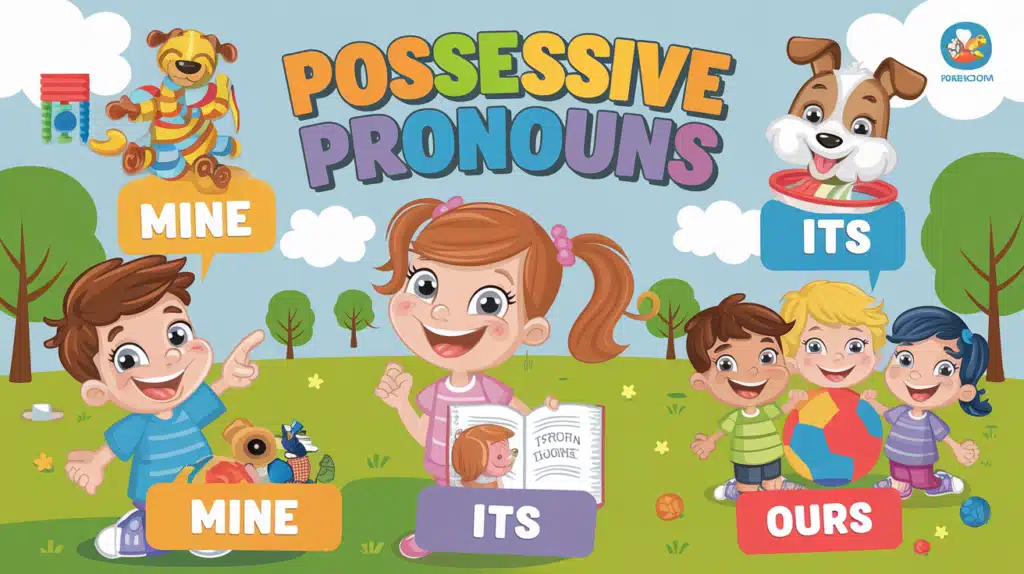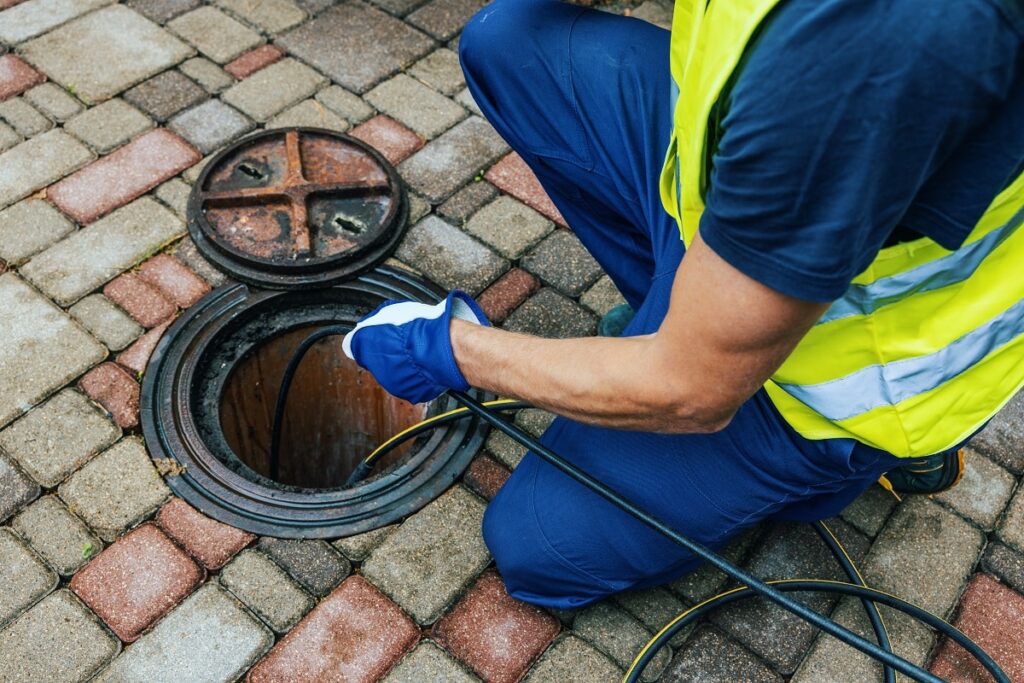Many parents and teachers find that children mix up words like “my,” “your,” and “their” in daily conversations. Getting these words right can make a big difference in how clearly kids express their ideas.
Teaching possessive pronouns doesn’t have to be difficult. With the right methods and simple activities, children can quickly learn to use these words correctly in their speaking and writing.
In this guide, we’ll share three effective teaching approaches that work well with young learners.
You’ll learn about fun games, useful examples from everyday life, and practical exercises that help kids understand and remember possessive pronouns.
These methods have helped many students improve their language skills.
What Are Possessive Pronouns?
Possessive pronouns are words that show ownership without needing a noun after them. The main possessive pronouns in English are mine, yours, his, hers, ours, and theirs.
Here’s how they work in sentences:
- “This book is mine.” (replacing “my book”)
- “That toy is yours.” (replacing “your toy”)
- “The blue car is his.” (replacing “his car”)
Think of these words as ownership words that can stand alone in a sentence. They tell us who owns something without repeating the item’s name.
Difference Between Possessive Pronouns and Possessive Adjectives
Possessive pronouns and possessive adjectives often cause confusion. Here’s what makes them different:
| Person | Possessive Adjective | Possessive Pronoun |
|---|---|---|
| First Person | my | mine |
| This is my cat. | This cat is mine. | |
| Second Person | your | yours |
| That is your house. | That house is yours. | |
| Third Person | their | theirs |
| Those are their bikes. | Those bikes are theirs. |
Key Difference: Possessive adjectives need a noun after them, while possessive pronouns can stand alone.
Why Is It Important to Teach Possessive Pronouns?
Children need to learn possessive pronouns early in their language development. These words help form the base for more complex grammar skills later on.
When kids understand ownership words like “mine,” “yours,” and “theirs,” they start to grasp how words connect in sentences.
Good grammar habits start with basic skills. When children learn to use possessive pronouns correctly, they:
- Make fewer mistakes in their writing
- Form clearer sentences
- Build confidence in their speaking
- Understand how different parts of speech work together
Enhancing Communication Skills
Using possessive pronouns correctly helps children express themselves better. Clear communication depends on using the right words in the right way. When kids mix up words like “my” and “mine,” their message might confuse others.
Better communication through proper use of possessive pronouns leads to:
- Clear expression of ownership
- Less confusion in conversations
- Better writing in school work
- More effective storytelling
- Improved reading comprehension
Teaching these words at the right time helps children become better speakers and writers. They learn to share their thoughts with others in ways that make sense.
Steps to Teach Possessive Pronouns to Kids
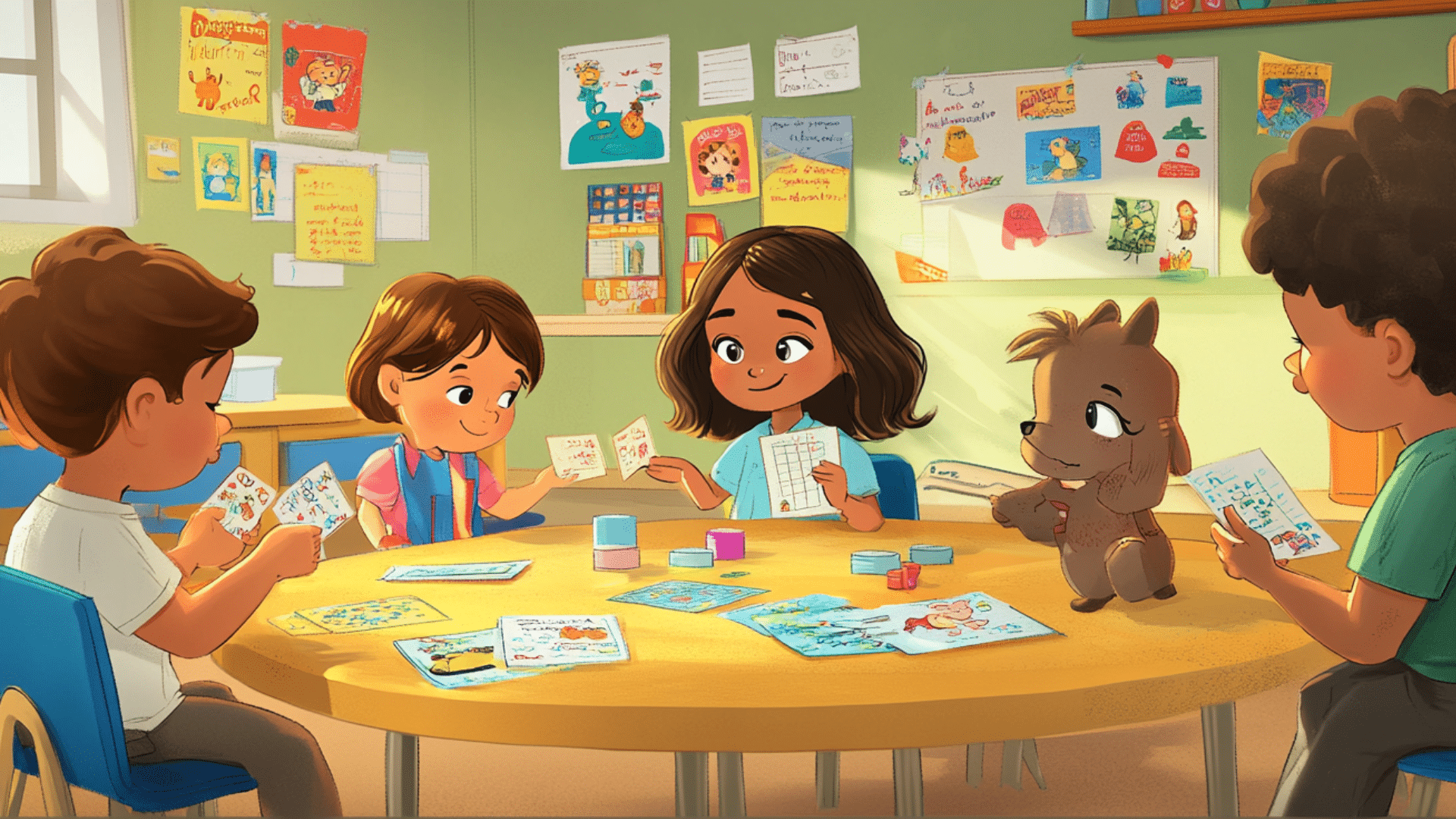
Start with Simple Pronouns: Mine, Yours, and Theirs
Begin with the most common possessive pronouns that kids use daily. Start simple to help them understand the basics:
- Teach “mine” first – it’s the word children use most often
- Move to “yours” – shows the back-and-forth of ownership
- Add “theirs” once they understand the first two
Give real examples they can relate to:
- “The red pencil is mine, and the blue pencil is yours.”
- “The snacks in the blue lunchbox are theirs.”
Use Visual Aids and Charts
Pictures and simple charts make learning stick. Visual tools help kids see how possessive pronouns work:
- Show pictures of items with clear ownership
- Create simple matching exercises with arrows
- Use different colors for different pronouns
For example:
- Draw a toy box with labels showing what belongs to whom
- Make flashcards with pictures and corresponding pronouns
- Color-code different pronouns in example sentences
Practice with Fun Activities and Games
Turn learning into play with these simple activities:
- “Whose Is It?” – Students pass objects and practice saying “It’s mine” or “It’s yours”
- Simon Says with possessive pronouns
- Sorting games with classroom items
Keep activities short and switch between them to maintain interest.
Create Relatable Scenarios
Use everyday situations kids know well:
- Classroom situations: “These crayons are mine, those markers are yours”
- Playground examples: “The red ball is theirs”
- Home scenarios: “This bedroom is mine”
Make examples personal to their lives:
- Talk about their toys
- Discuss family pets
- Use classroom materials
This helps them connect the grammar rules to real situations they face each day.
Fun Activities to Reinforce Learning
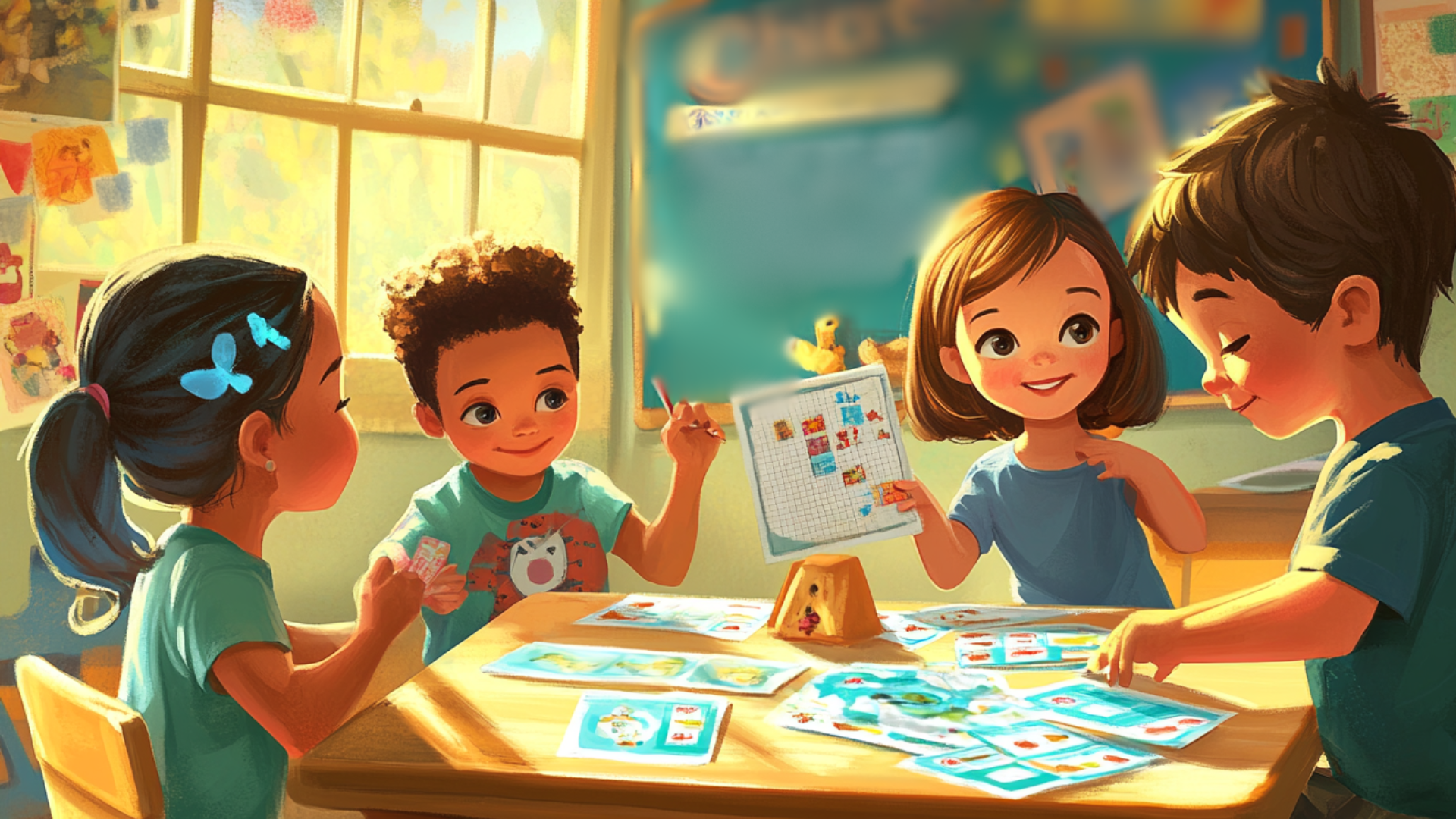
1. Matching Games with Possessive Pronouns
Create simple matching activities to help kids connect objects with their owners. Print cards with pictures of items on one set and matching possessive pronouns on another set. Start with five pairs and increase the number as children improve.
Students can work in pairs or small groups. One child says, “The blue hat is mine,” while the other finds the matching card. Take turns to keep everyone involved.
Add memory-style games where cards are placed face down. Kids flip them over and match the item to its correct possessive pronoun.
Make a classroom wall display where students can move cards around to show ownership. This hands-on approach helps them remember the correct usage through physical movement and visual connections.
2. Storytelling with Possessive Pronouns
Turn storytime into a learning chance by creating tales about sharing and ownership. Begin with a simple story about classroom items: “The red pencil is mine. The yellow pencil is yours.”
Let children make their own stories using props or pictures. They can bring items from home and tell stories about them. For example: “This teddy bear is mine. His blanket is his.”
Create a story circle where each student adds one sentence using a possessive pronoun. This builds a group story while practicing proper word use. Keep stories short and fun to maintain interest.
3. Interactive Quizzes and Worksheets
Design simple fill-in-the-blank exercises where kids complete sentences with the right possessive pronoun. Use pictures next to sentences to give visual hints about ownership.
Make true/false questions with statements like “This book is mine” while showing different objects. Students stand up for true and sit down for false. This adds movement to learning.
Create word searches with possessive pronouns hidden among other words. Include picture clues at the bottom of worksheets to help students connect pronouns with real items.
Keep activities short, colorful, and focused on one or two pronouns at a time.
Common Mistakes Kids Make and How to Address Them
Kids often mix up subject pronouns (I, you, he, she, they) with possessive pronouns (mine, yours, his, hers, theirs). This confusion leads to sentences like “This is she book” instead of “This is her book.”
| Type | Pronouns | Example | When to Use |
|---|---|---|---|
| Subject Pronouns | I, you, he, she, they | I am reading a book. | Shows who does the action |
| Possessive Pronouns | mine, yours, his, hers, theirs | The book is mine. | Shows who owns something |
Overusing Possessive Pronouns
Children often repeat possessive pronouns more than needed in their speech and writing. Here’s how to help them use these words properly:
Common Overuse Problems:
1. “This is mine book and that is mine pencil and mine chair.” Better: “These are my things: a book, a pencil, and a chair.”
2. “His toy is his and her toy is hers and my toy is mine.” Better: “Each person has their own toy.”
3. “The blue hat is mine, mine, mine!” Better: “The blue hat is mine!”
- Start Simple
- Begin with basic sentences
- Focus on one possessive pronoun at a time
- Model clear, short statements
- Show Right vs. Wrong
- Point out extra words that aren’t needed
- Help kids spot repeated words
- Give examples of better ways to say things
- Make Corrections Gently
- Notice when kids use good sentences
- Help fix mistakes without making them feel bad
- Turn corrections into learning chances
- Use Real Life Examples
- Practice during class activities
- Talk about items in the room
- Use snack time or play time to practice
- Make It Fun
- Create word replacement games
- Let kids catch your mistakes
- Give prizes for using words well
Tips for Parents and Teachers
Encourage Regular Practice
Parents and teachers need simple ways to help children learn possessive pronouns in daily life:
- Simple Speaking Tasks
- Use morning greetings to practice: “This desk is yours”
- Label items during cleanup: “The red truck is mine”
- Ask questions at snack time: “Whose lunch box is this?”
- Writing Activities
- Write short notes using possessive pronouns
- Label drawings with “mine” and “yours”
- Create simple stories about sharing toys
- Checking Progress
- Listen for proper use in daily talk
- Note which pronouns need more work
- Track improvement over time
Use Everyday Conversations to Reinforce Learning
Make learning natural by using real situations:
- Meal Times
- “This plate is yours”
- “That cup is mine”
- “The blue spoon is theirs”
- Play Time
- “Which toy is yours?”
- “The blocks are mine”
- “These games are ours”
- School Activities
- “The red pencil is mine”
- “Those books are yours”
- “This project is theirs”
Remember these key points:
- Keep corrections simple
- Praise good usage
- Make learning feel natural
- Stay consistent with practice
- Set a good example by using pronouns correctly
Resources for Teaching Possessive Pronouns
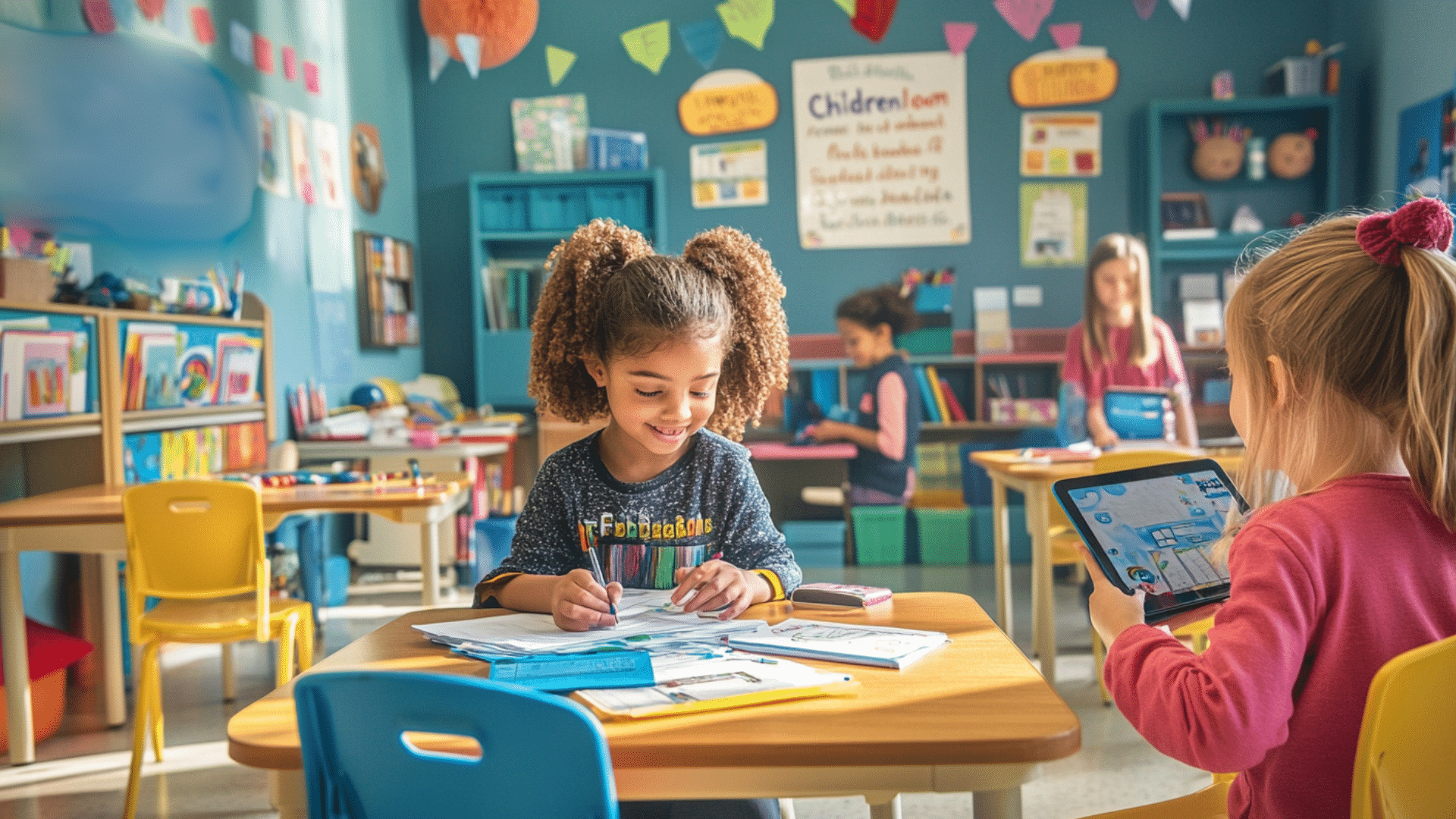
Printable Worksheets
Printable worksheets are a great way to introduce and reinforce possessive pronouns in a structured format.
-
Fill-in-the-Blank Sheets
Simple sentences with missing pronouns help learners focus on usage. Picture clues next to each sentence offer context, while answer keys allow self-checking and encourage independent learning. -
Matching Activities
Draw lines between items and owners, circle the correct possessive pronoun, or cut and paste ownership labels. These activities combine hands-on learning with critical thinking.
Story Completion Pages
-
Short Stories with Blank Spaces
Engage students with short stories where they insert the correct possessive pronouns. This reinforces understanding in a fun, contextual way. -
Picture-Based Writing Prompts
Pictures inspire kids to write sentences or stories using possessive pronouns, blending creativity with grammar skills. -
Guided Writing Practice
Provide partially completed stories and guide students to fill in the missing pronouns, enhancing both grammar and narrative-building skills.
Online Games and Apps
-
Interactive Games
Fun, point-and-click ownership activities, multiple-choice questions, and reward systems keep kids engaged while practicing possessive pronouns. -
Learning Apps
Word-matching games, virtual classroom activities, and progress tracking tools let kids learn at their own pace and measure improvement. -
Digital Flashcards
Picture-word pairs with sound-enabled pronunciation allow self-paced, interactive learning for visual and auditory learners.
Tips for Using Resources
-
Choose Materials Wisely
Pick resources appropriate for the child’s age. A mix of paper-based and digital tools works best. Ensure content is simple and clear to avoid confusion. -
Track Progress
Set learning goals and monitor progress to identify effective methods. Adjust resources for areas needing more practice. -
Maintain Good Practice
Keep learning sessions short and engaging by varying activities. Provide consistent feedback to boost confidence and reinforce learning.
Conclusion
Teaching possessive pronouns to children works best when we keep it simple and steady.
Our guide shows that with the right mix of classroom work, daily practice, and fun tasks, kids can learn these important words well.
Parents and teachers play key roles in this learning path. By using clear examples, fixing mistakes kindly, and making practice part of everyday talk, they help children understand and use these words better.
Remember that each child learns at their own speed. What matters most is making the learning process clear and fun.
With time and practice, children will start using “mine,” “yours,” and other possessive pronouns correctly in their speaking and writing.

